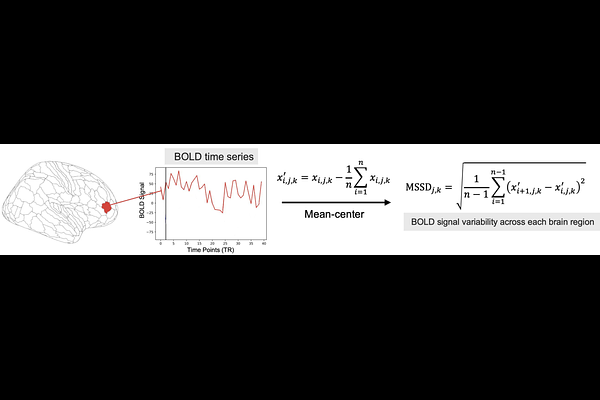Transdiagnostic Profiles of BOLD Signal Variability in Autism and Schizophrenia Spectrum Disorders: Associations with Cognition and Functioning

Transdiagnostic Profiles of BOLD Signal Variability in Autism and Schizophrenia Spectrum Disorders: Associations with Cognition and Functioning
Secara, M. T.; Khan, Z.; Rashidi, A.; Oliver, L. D.; Yu, J.-C.; Foussias, G.; Dickie, E. W.; Szatmari, P.; Desarkar, P.; Lai, M.-C.; Baracchini, G.; Malhotra, A. K.; Buchanan, R. W.; Voineskos, A. N.; Ameis, S. H.; Hawco, C.
AbstractBackground Autism spectrum disorder (autism) and schizophrenia spectrum disorders (schizophrenia) exhibit overlapping social and neurocognitive impairment and considerable neurobiological heterogeneity. Blood-oxygen-level-dependent (BOLD) signal variability captures the brain\'s moment-to-moment fluctuations, offering a dynamic marker of neural flexibility that is sensitive to cognitive capacity. This study aimed to examine intra-regional BOLD signal variability during rest and task across schizophrenia, autism, and typically developing controls (TDC) to explore transdiagnostic patterns of brain signal variability and their relationship with cognitive and functional outcomes. Methods Intra-regional BOLD variability, measured by mean squared successive difference (MSSD), was obtained from resting-state and Empathic Accuracy task fMRI in 176 SSD, 89 autism, and 149 TDC participants. ANCOVAs, controlling for age, sex, and motion, assessed group differences in regional and network-level BOLD variability and dimensional associations with social cognition, neurocognition, social functioning, and symptom severity. Results Both autism and schizophrenia exhibited lower BOLD signal variability than TDC across rest and task, with reduced variability observed in somatomotor, visual, and auditory networks (pFDR < 0.01). Greater network variability was positively associated with better social cognitive, neurocognitive, and functional scores across the sample. Resting-state variability showed stronger group-based differences and cognitive associations than task-based variability. Conclusions BOLD signal variability is positively associated with social cognition, neurocognition, and social functioning across groups, suggesting that variability impacts cognitive efficiency and behaviour. Reduced variability in autism and schizophrenia may indicate similar patterns of neural rigidity among these related conditions, positioning BOLD variability as a potential biomarker for neural flexibility and a valuable target for future transdiagnostic clinical interventions.